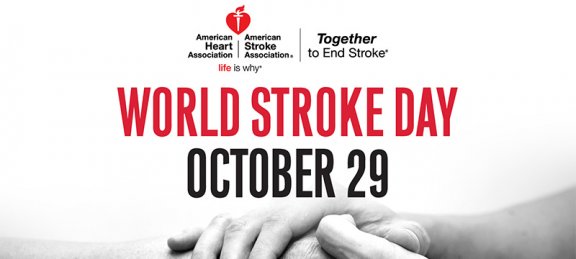World Stroke Day

A stroke can happen to anyone, at anytime, anywhere, and anyone’s life can change in the matter of an instance. 1 in 4 adults will have a stroke in their lifetime. Strokes are the leading cause of death and disability worldwide.
What is a stroke?
A stroke occurs when a blood vessel brings blood to the brain and gets blocked or ruptures.
This means the brain can’t get the oxygen and nutrients it needs, and without oxygen and nutrients, nerve cells can’t function. Your brain controls your ability to move, feel, think and behave. A brain injury from a stroke could affect any or all of these functions.
Signs of a Stroke in Men and Women
- Sudden numbness or weakness in the face, arm, or leg, especially on one side of the body.
- Sudden confusion, trouble speaking, or difficulty understanding speech.
- Sudden trouble seeing in one or both eyes.
- Sudden trouble walking, dizziness, loss of balance, or lack of coordination.
- Sudden severe headache with no known cause.
F.A.S.T. is an easy way to remember the sudden signs of a stroke.
1. Face drooping.
2. Arm weakness.
3. Speech difficulty.
4. Time to call 911.
If you have any of these symptoms, do not ignore them and call 911 immediately.
Tips and Strategies for Moving Forward
Every stroke is distinctive, but strokes tend to affect people in common ways. After your stroke, you may have to learn how to do the most basic things in life again such as: walking, breathing, eating swallowing, dressing, or driving. These tips and strategies can help you improve and get you back on track.
Strokes don’t discriminate. Almost all strokes could be prevented, but by making a few minor changes, you can reduce your risk and increase brain function. Some ways to help you get control of your health include quitting smoking, diet and exercise, controlling blood sugar if you have diabetes, and treating high blood pressure.
For more information, visit the American Stroke Association website here.

